Disclosure: Meeple Mountain received a free copy of this product in exchange for an honest, unbiased review. This review is not intended to be an endorsement.
First Orchard, part of HABA’s My Very First Games series, pits the players against a hungry crow looking for its next meal. It’s harvest time and the trees are heavy with fruit. The players will take turns rolling a die to collect fruit from the trees and then place them into the basket. But a crow lurks in the wings ready to cause mischief and make away with your crop! Can the players collect all of the fruit before the feathered fiend pilfers their produce?
First Orchard comes with chunky wooden fruit in 4 different colors and types – red apples, green apples, yellow pears, and blue plums, 5 path tiles, 4 tree tiles, a color symbol die, a cardboard basket, and a wooden crow. All of the wooden pieces are large and chunky and brightly colored, suitable for free play as well as playing the actual game.
Free Play
In Free Play mode, you and your child can spend time exploring the game components together. What colors are the various pieces of fruit? How many path tiles are there? Which fruit is the pear? There’s a lot to explore here and having an understanding of the various colors will certainly help when it comes to playing First Orchard’s game mode. Your child can even enjoy these components outside of the confines of the game if that’s their desire.
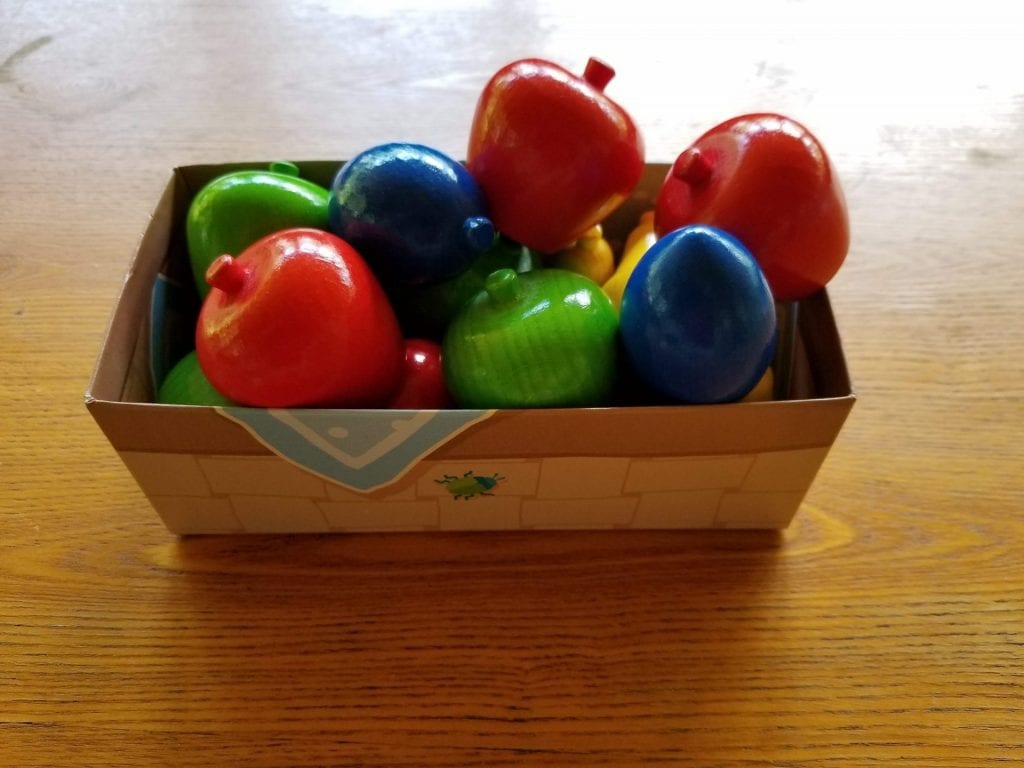
Not all of the pieces are suitable for this, though. The non-wooden components (the tiles and the basket) are made of cardboard and, while thick and sturdy, will most likely not hold up well in Free Play mode. Young children have a tendency to explore their world by sticking as much of the world around them as they can into their mouth, a less than ideal situation for anything made of paper.
Skills For Life: Being able to distinguish and understand the various facets of a single object – its color, its shape, its name, etc. – will serve your child well in the future when they are able to enjoy games such as Bruges which uses its cards in a multitude of different ways. Each card can be used for 1 of 6 possible actions determined by the card’s color, name, or type.
Game Mode
In First Orchard’s game mode, the players will take turns rolling the color symbol die and then performing 1 of 3 possible actions depending upon the rolled result: picking a fruit, moving the crow, or passing.
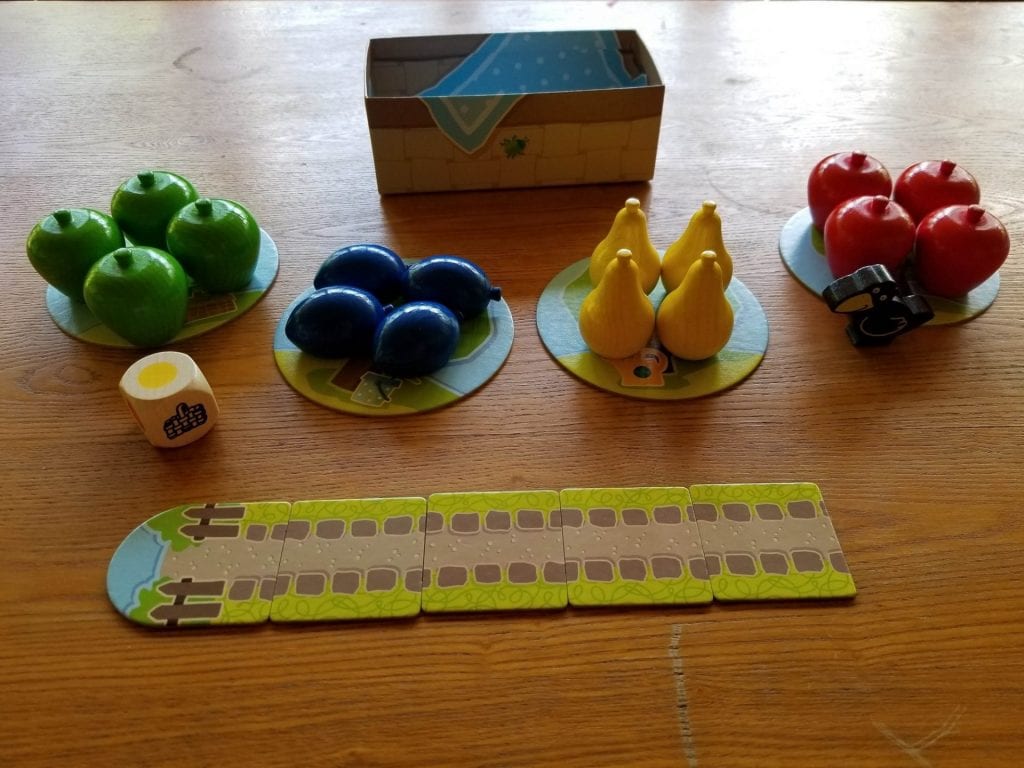
The game is set up by placing each piece of fruit on its matching tree tile, assembling the path tiles end to end, and placing the crow pawn at the beginning of the path. Then one of the players rolls the color symbol die. If the die rolls up with a color, then the player picks one of the matching colored fruits from its tree and places it into the basket. The player can choose any color of their choice if the die rolls up a basket icon. If the die rolls up a color of which all of the matching fruits have been placed in the basket, then the player must pass their turn.
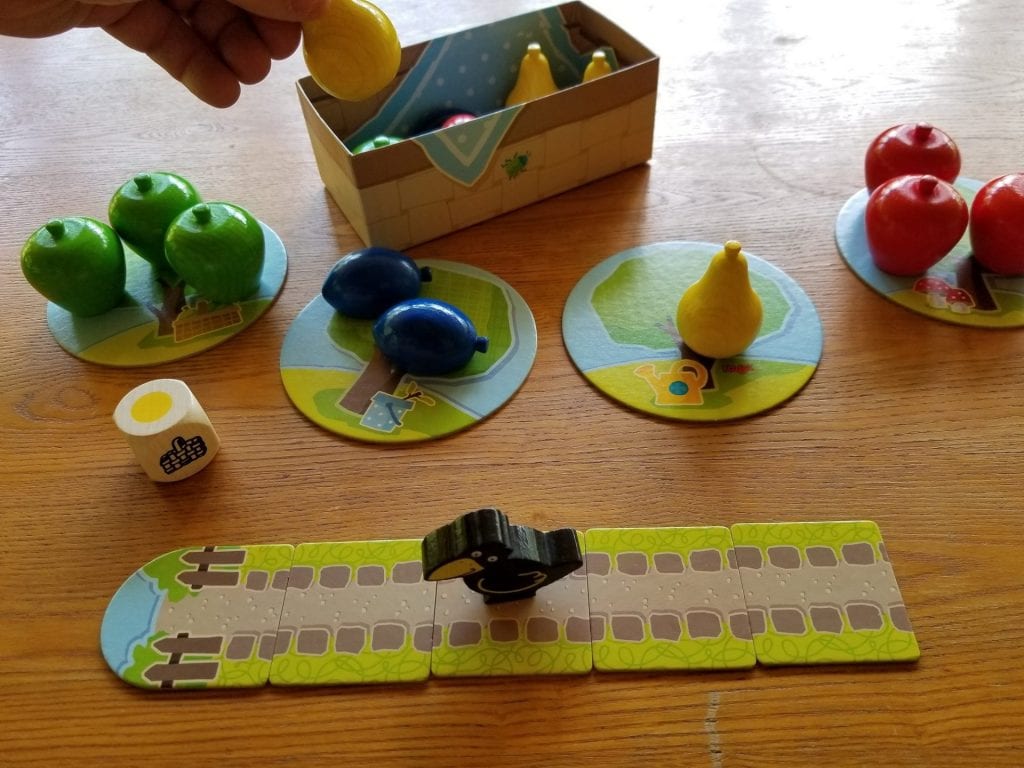
If the player rolls up a crow, the crow moves up 1 path tile. If the crow reaches the end of the path, the players lose and the crow wins. If all of the fruit makes it to the basket before the crow reaches the end of the path, though, the players win and the poor crow goes back to its roost with an empty belly.
Skills For Life: Cooperative play fosters a team spirit in which everybody involved is invested in the venture at hand. Being a team player is a skill that will come in handy when you and your child are working to stave off global catastrophe in Pandemic Legacy someday. Pandemic Legacy exemplifies working together in a way that very few games can.
Thoughts
At 2 and a half years old, my son is not ready to play Terraforming Mars or The Great Zimbabwe with me just yet, and we’re certainly a long ways away from the cooperative strategy needed to make it through a session of Gloomhaven in one piece. That’s why games like First Orchard are important, especially as a parent that’s also a gamer. My son is not only learning basic skills like recognizing shapes and colors or how to count to 4, but he’s also picking up subtle skills that will make him a more effective gamer someday. The anticipation of that is something that really excites me.
There is no denying my son’s enthusiasm about playing this game. We leave it very prominently displayed on a shelf in our living room and he is constantly begging us to bring it down and set it up so that we can play it and he’s never happy when we’re putting it away. Given the opportunity, I have no doubt that he’d play First Orchard until he physically couldn’t remain awake any longer. I’m not sure if it’s the game itself that he enjoys so much as it is getting to play his game with his mommy and daddy. My wife and I make a big hullabaloo every time the crow moves up the path and we praise him enthusiastically whenever he’s able to make a successful match.
And speaking of that pesky crow, there’s another important lesson that he’s learning that isn’t immediately evident from the description on the game box: the art of losing gracefully. First Orchard is a game that will defeat you time and time again. When the crow reaches the end of the path, we’re careful to acknowledge that fact, but a big deal is never made of it. One game’s ending is just an opportunity for another’s beginning. Cooperative games are good at teaching us how to lose gracefully since we’re all losing together. Even when we’re losing, though, it never feels like it because, if you ask me, getting to play games with our son is nothing but winning.
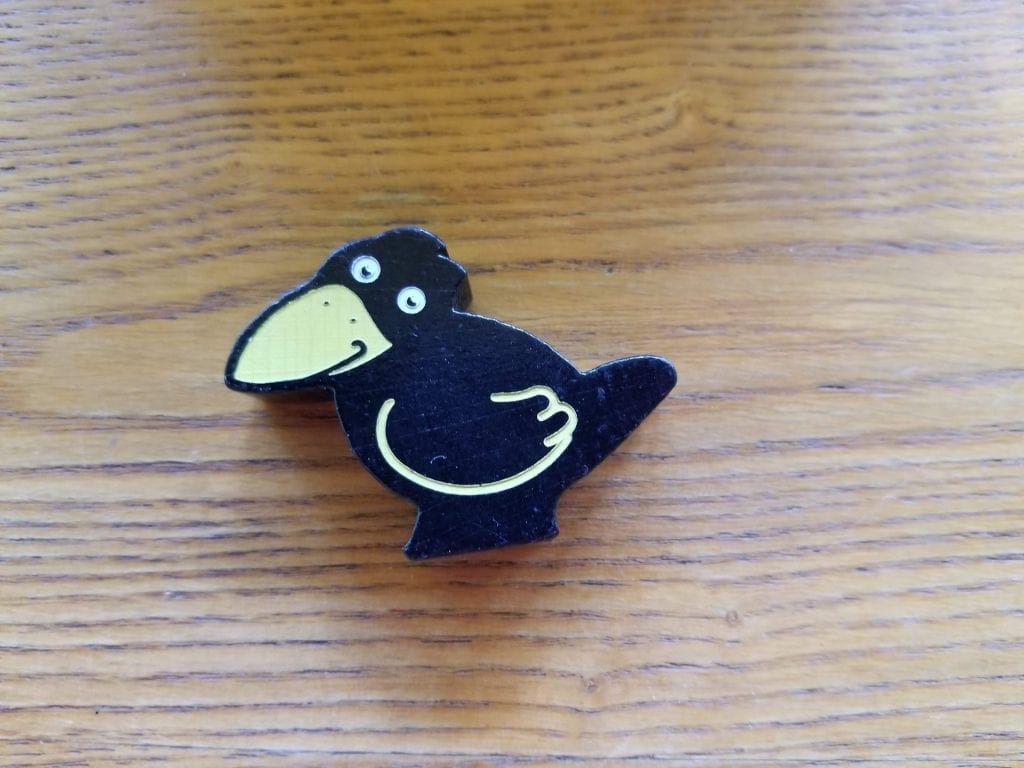
Is First Orchard a game that’s going to keep older children occupied? Probably not. It’s a very basic game in its size and scope and there’s nothing included in the box that can be used to increase the difficulty to make it more appealing to older children. Nibble Munch Crunch, for instance, has a built-in memory game mode which significantly increases the challenge. There’s just nothing like that here.
So, while the game says 2+ on the box, I’d wager that a 4 year old would get pretty bored with it fairly quickly. Still, though, that’s a solid 2 years of fun. Not bad at all.
My only small gripe with First Orchard is with some of the colors and fruits that were chosen. Why include 2 different kinds of apples? There are plenty of green fruits that grow on trees with their own unique shapes (limes, for instance). And when was the last time that you saw a blue plum? I had a plum tree in my backyard when I was growing up and I can attest that plums are purple. So why not just make them purple?
Aside from these small quibbles, though, I have nothing but praise for this game. First Orchard is an excellent introduction to the concept of cooperative gameplay and it’s sure to put a smile on your child’s face. A smile that will be reflected on your own.
For some ideas of other games to play with younger children, check out our Top 6 Games to Play With Younger Kids.


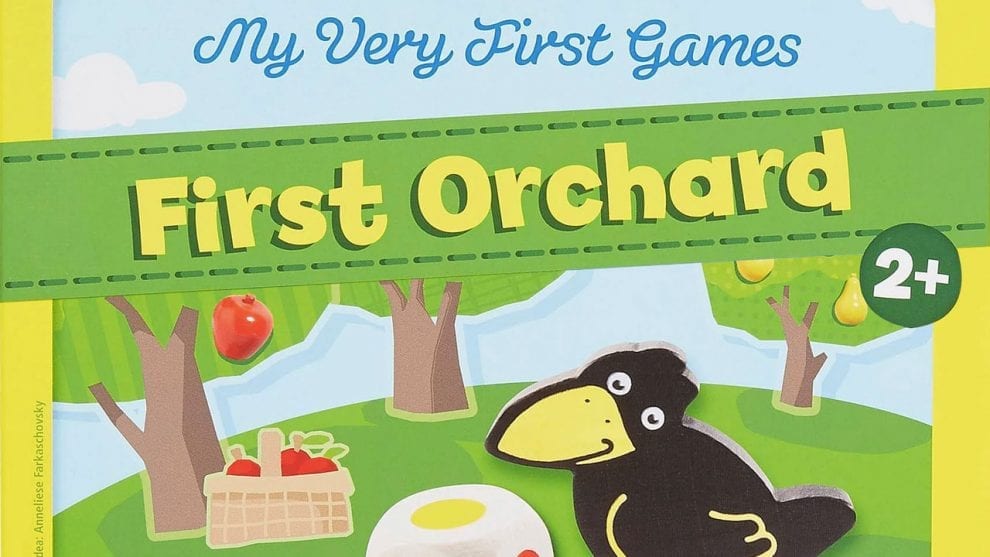


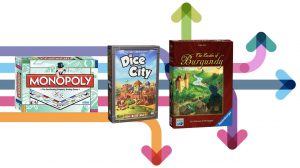






Add Comment